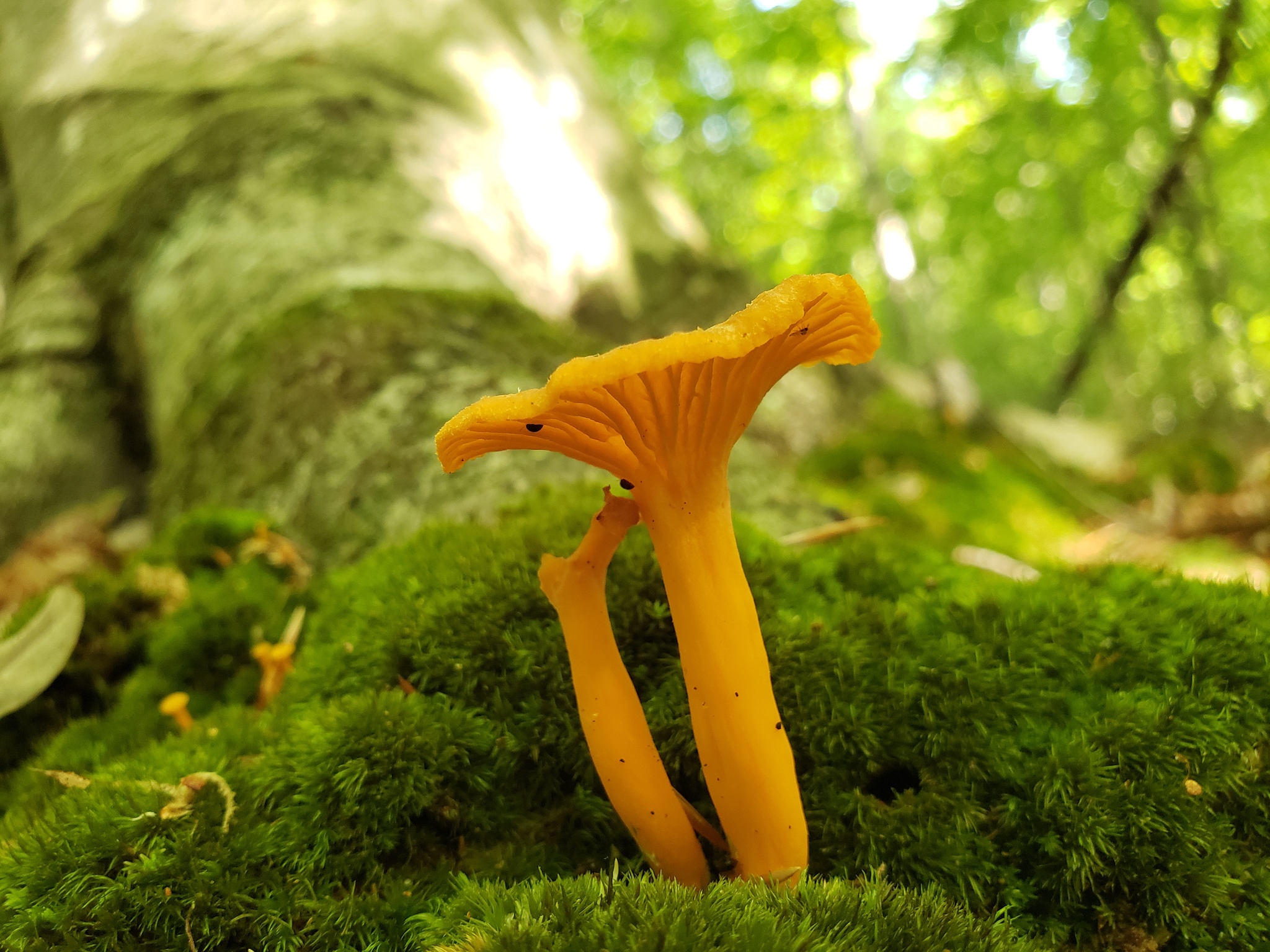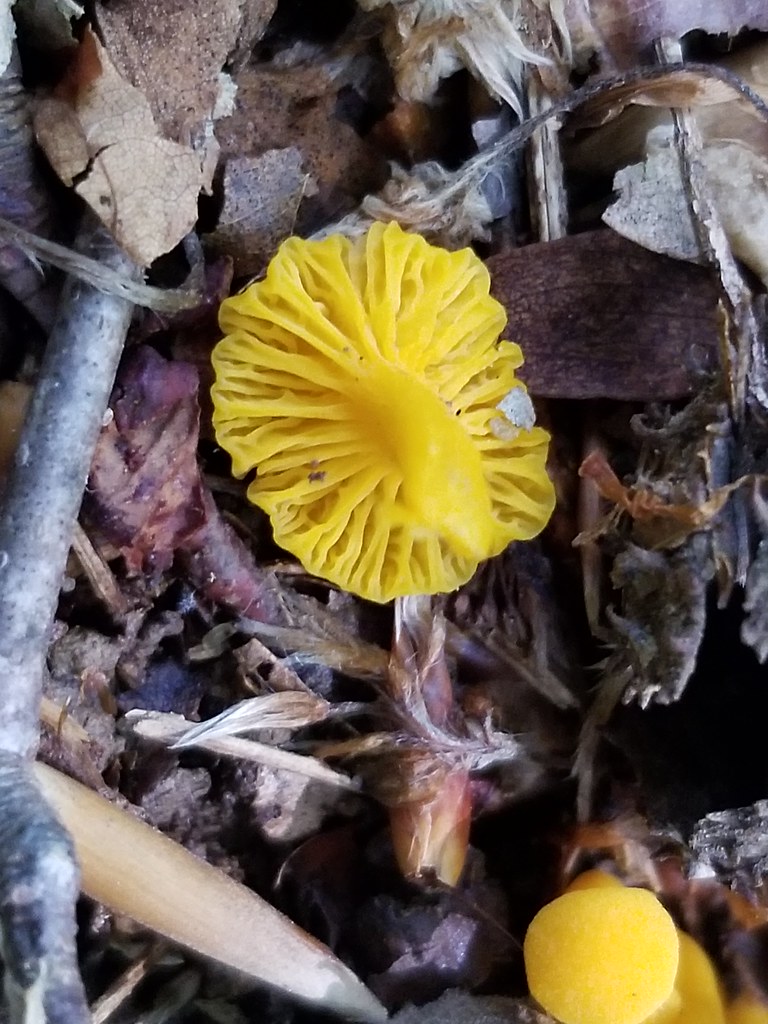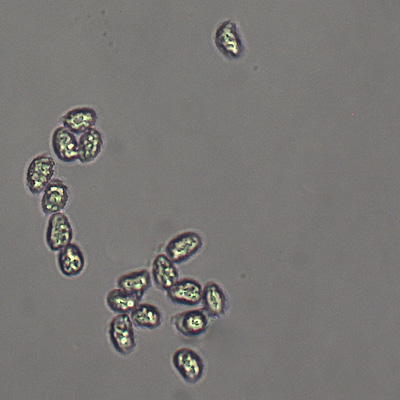Map Snapshot











153 Records
Status
Found scattered or groups on ground (often in moss) in hardwood forests (J. Solem, pers. comm.). It is one of the early fruiting mushrooms that appears when Pluteus and Oudemansiella first start appearing on rotten wood (L. Biechele, pers. comm.).
Description
Cap: Yellow/yellow-orange, smooth, convex to nearly flat with slightly depressed center. Fertile surface: Yellow-orange, decurrent, gill-like structures. Stalk: Color of cap, smooth. Maximum diameter ~1", mostly much smaller (J. Solem, pers. comm.).
Seasonality Snapshot
Source: Wikipedia
| Cantharellus minor | |
|---|---|

| |
| Scientific classification | |
| Domain: | Eukaryota |
| Kingdom: | Fungi |
| Division: | Basidiomycota |
| Class: | Agaricomycetes |
| Order: | Cantharellales |
| Family: | Cantharellaceae |
| Genus: | Cantharellus |
| Species: | C. minor
|
| Binomial name | |
| Cantharellus minor Peck (1872)
| |
| Synonyms | |
| Cantharellus minor | |
|---|---|
| Ridges on hymenium | |
| Cap is convex | |
| Hymenium is decurrent | |
| Stipe is bare | |
| Spore print is yellow | |
| Ecology is mycorrhizal | |
| Edibility is edible | |
Cantharellus minor is a fungus native to eastern North America. It is one of the smallest of the genus Cantharellus, which includes other edible chanterelles.[1]
Description
[edit]Cantharellus minor is colored bright yellow to yellowish-orange.[2] The cap ranges from 0.5 to 3 centimetres (1⁄4 to 1+1⁄4 in) wide and is convex and umbonate, often shallowly depressed, becoming funnel-shaped in some. The yellowish gills are decurrent, fade to yellowish white in maturity,[3] and may seem large in proportion to the small fruiting body.[2] The stipe is 2–5 cm (3⁄4–2 in) tall and 3–6 millimetres (1⁄8–1⁄4 in) thick.[2]
Similar species
[edit]Lookalikes include the Gulf Coast's C. tabernensis which has a darker center, Craterellus ignicolor which has shallower ridges and usually a depression in the cap, and Gloioxanthomyces nitidus which has a very circular margin, fairly straight stem and non-forking gills.[2]
Distribution and habitat
[edit]Native to eastern North America,[1] the fungi fruits from June to September.[2][4]
It is suspected of being mycorrhizal, found in association with oaks and moss.[1] Recently, C. minor has been reported from semi-evergreen to evergreen forests in the Western Ghats, Kerala, India forming ectomycorrhizal associations with tree species like Vateria indica, Diospyros malabarica, Hopea parviflora, and Myristica species.[3]
Uses
[edit]Although insubstantial, the mushrooms are edible.[5]
References
[edit]- ^ a b c Kuo, M. (February 2006). "Cantharellus minor". MushroomExpert.Com. Retrieved 2011-03-24.
- ^ a b c d e Audubon (2023). Mushrooms of North America. Knopf. p. 98. ISBN 978-0-593-31998-7.
- ^ a b Mohanan C. (2011). Macrofungi of Kerala. Kerala, India: Kerala Forest Research Institute. ISBN 978-81-85041-73-5.
- ^ Miller Jr OK.; Miller HH. (2006). North American Mushrooms: A Field Guide to Edible and Inedible Fungi. FalconGuides. Guilford, CN: Globe Pequot Press. p. 334. ISBN 978-0-7627-3109-1.
- ^ "Cantharellus minor". Rogers Plants. Archived from the original on 2011-11-07. Retrieved 2011-05-08.
External links
[edit]











